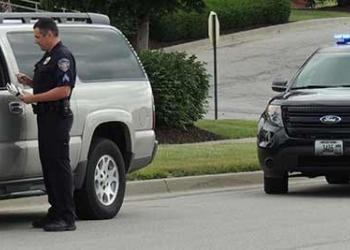
Detaining Passengers in a Lawfully Stopped Vehicle.The Proof Requirements for Aggravating Circumstances
Officers making a traffic stop may lawfully order passengers to remain in the vehicle for the duration of the traffic stop. A jury need not be unanimous in determining which aggravating factors apply during the penalty phase of a capital murder case. The burden of proof during the penalty phase in proving aggravating factors is proof by a preponderance of the evidence.
Defendant Don’te Lamont McDaniel was a member of the Bounty Hunter Bloods, a Southeast Los Angeles street gang which controlled the Nickerson Gardens area; a large public housing complex. At around 3:30 a.m. on April 6, 2004, defendant and another gangster (prosecuted separately) recruited (allegedly at gunpoint) Elois Garner to knock on the back door of a Nickerson Gardens apartment rented to Annette Anderson. Inside the apartment at the time were Annette, George Brooks, Janice Williams and Debra Johnson. (There was some inference in the case decision that Brooks—also a Bounty Hunter Blood member—had stolen drugs from defendant and was selling them.) When asked who was knocking, Elois Garner identified herself. Janice Williams opened the door, only to be confronted by defendant pointing a gun at her. Defendant immediately shot and wounded Williams, who lost consciousness. (Williams survived.) George Brooks, standing in the kitchen, was shot numbers times and died at the scene. Annette Anderson—also in the kitchen--was shot numerous times, also dying at the scene. Debra Johnson, who was in the living room, was seriously wounded with gunshot wounds to her face and chest. (Johnson survived.) Nine-millimeter and a .357 magnum shell casings were recovered from the scene. Both Williams and Johnson identified defendant to investigators as the shooter. On April 11—five days after the shooting—Los Angeles County Deputy Sheriffs Marcus Turner and Eric Sorenson were on patrol in the Nickerson Gardens area when they noticed a Toyota without a license plate driving on 120th Street near Central Avenue. Two individuals were in the Toyota. The deputies activated their marked vehicle’s emergency lights in an attempt to pull it over. The car continued on for about 10 seconds during which it was noticed that the passenger’s head kept moving back and forth, as if “conversating” (sic) with the driver. Deputy Turner activated the siren, prompting the car to pull to the curb. As soon as the car stopped, the passenger—identified as defendant—opened his door, “stepped out and made a motion” as if he was about “to run out of the vehicle.” Deputy Sorenson yelled at defendant to get back into the car. Defendant complied. Determining that the driver did not have a driver’s license, he was arrested and put into the patrol vehicle. Defendant was asked to step out of the car in preparation for a pre-impound inventory search of the vehicle (the legality of which was not contested). As he did so, Deputy Turner noticed a bulge in defendant’s right front pants pocket that resembled a gun. Defendant was immediately patted down for weapons, resulting in the recovery of a loaded semiautomatic nine-millimeter Ruger pistol and a separate loaded magazine. The nine-millimeter cartridges recovered from the murder scene were later matched to this Ruger. Defendant’s motion to suppress the firearm was denied by the trial court. He was tried and convicted of two counts of murder, two counts of attempted murder, and other charges, with special circumstances being found to be true. Upon the jury determining during the penalty phase of the trial that the aggravating factors outweighed any factors in mitigation, defendant was sentenced to death. His appeal to the California Supreme Court was automatic.





